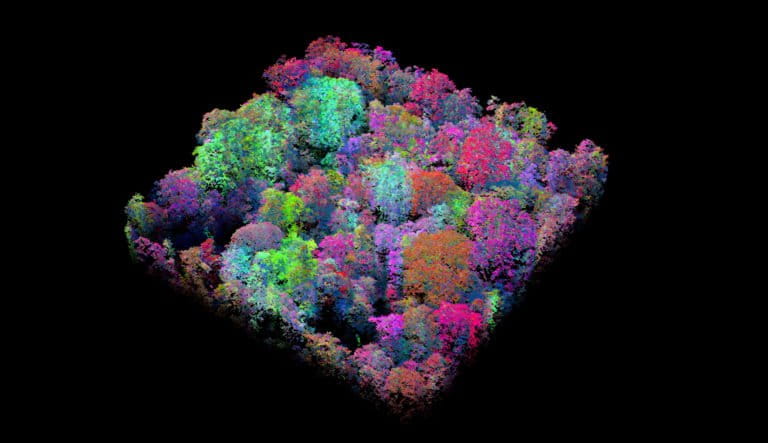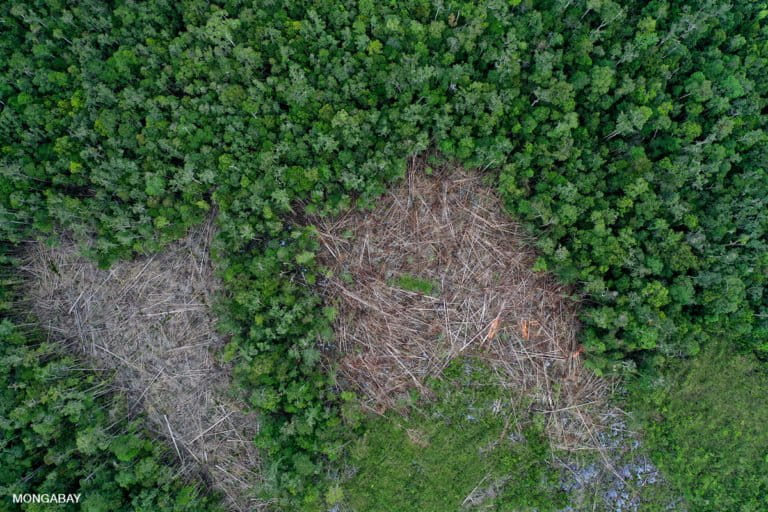- In 2019, XPRIZE Rainforest opened its doors and challenged the world to develop new biodiversity assessment technologies by offering a $10 million prize for the best one.
- In this commentary, Jonah Wittkamper, President of the Global Governance Philanthropy Network and co-founder of NEXUS, makes an economic argument for participating in the contest.
- Wittkamper says a great deal of value could be unlocked with the ability to rapidly assess rainforest biodiversity.
- This post is a commentary and does not necessarily reflect the views of Mongabay.
In 2019, XPRIZE Rainforest opened its doors and challenged the world to develop new biodiversity assessment technologies by offering a $10 million prize for the best one. The consequent mobilization will extend over 5 years, will inspire the creation of various new biodiversity tech companies, and can help us discover many new ways to ensure that the Amazon rainforest is worth more alive and standing than cut and burned.
What is the economic value of the rainforest? What pre-existing markets can new biodiversity tech tap into for growth beyond the prize? What is the economic argument for XPRIZE Rainforest participation and entrepreneurship?

While rainforests provide $4 trillion/year in value through ecosystem services to the global economy, over $941 billion of annual corporate revenue is at risk due to dependency on commodities linked to deforestation. Correspondingly, a 2019 paper made the financial argument for conserving 30% of terrestrial nature by demonstrating how the economic benefits outweigh the costs by a factor of 5 to 1. And, finally, a 1996 paper outlines a protocol for calculating the commercial value of biodiversity on a given plot of land.
If, despite these numbers, governments have failed to halt deforestation to date, can we persuade the private sector to do so based on opportunities for future profits? Based on the numbers, we should be able to.
According to data from the 1990s, 25% of pharmaceutical drugs at the time were derived from tropical forests. Of the estimated 80,000 plant species in the Amazon, only 5% have been tested for their medicinal value. New technologies have improved testing and lowered costs opening the door for us to evaluate many more at scale. Though excitement about nature-derived pharmaceuticals waned slightly two decades ago, there is a resurgence today given that the success rate of synthetic drug development proved to be miniscule compared to naturally-sourced alternatives.
The pharmaceutical industry posted revenues of $1.25 trillion in 2019 and a growth rate of 5.8% per year. Though the number may be lower today, by using the 1990s number of a 25% market share, we can estimate that $256 billion in sales, per year, originated from tropical forest biodiversity in 2019. By comparison the 2018 revenue of Amazon.com was just $232 billion, suggesting that the valuation of the Amazon rainforest should far exceed that of the online retailer. New biodiversity tech will help us identify new species, valuate under-explored forests, and open new pharmaceutical frontiers and markets.

Amazon biodiversity assessment and research can give us new antibiotics, antineoplastics, antihypertensive remedies, biocosmetics, natural pigments, natural fragrances, essential oils, biodegradable polymers, bio-insecticides and more. Such development could be nothing short a new industrial revolution.
Biomimicry is another frontier for wealth creation that can stem from rainforest tech entrepreneurship. Biomimicry inventions are modeled on biological structures and processes with some great business stories built upon them.
In 1941, the Swiss engineer George de Mestral went for a walk in the woods with his dog and accidentally picked up burdock seeds on his clothing and on his dog’s fur. After looking at them under a microscope he founded Velcro Ltd. Last year, Velcro USA posted a revenue of $357 million with 1000 employees. A new oil and waterproof coating called Ultra Ever-Dry is modeled after the waxy hydrophobic/oleophobic nano-structures that keep lotus flowers dry and clean. It hit the market in 2013 and the company that invented it, Ultratech, was acquired 4 years later by Veeco for $862 million. By copying the wing structures of the rose butterfly, the Caltech bio-engineer Radwunal Siddique designed a type of thin solar cell that is 90% more effective than comparable cells. The butterfly’s wings have microscopic holes that scatter light and improve light absorption from more angles throughout the day. Given that the US paid a $1.3 trillion electric bill in 2018 and 2% was powered by solar, Siddique’s discovery could theoretically save consumers $12.3 billion per year if brought to the same scale.

Other biomimicry discoveries include the serrated edges of windmill turbines that were inspired by whale flippers and the Dew Bank Bottle which fills itself and is modeled after the African Namib Desert Beetle’s ability to collect water from fog in the air.
While the scale of new biological discoveries and the consequent biomimicry entrepreneurship is hard to predict, new biodiversity assessment technologies will certainly accelerate the growth of the sector.
Many people worry about how to ensure that this new wealth conserves nature. In 2010, the Nagoya Protocol was created for just that purpose as part of the Convention on Biological Diversity. It requires revenue sharing with source communities from wealth creation that stems from biodiversity. To date, it has been ratified by 127 countries. The Brazilian Genetic Heritage Management Council ensures the same for Brazil.
Biodiversity monitoring is also becoming important to the carbon market as more companies make pledges to offset their carbon footprints and search for premium forest and carbon credits to buy. Given that the carbon market grew 34% to reach $215 billion in 2020, forest credit platforms like Pachama have seen record growth. Though the company relies on satellite images and AI to predict and prevent deforestation, perhaps its future forest credit valuation system could sell at an even greater premium if packaged with real-time biodiversity monitors like those of Rainforest Connection.

There are many other industrial applications for new rainforest tech as well. Law enforcement agencies need drones that can photograph and help prosecute illegal loggers. As residents of the Brazilian Amazon pursue the multibillion dollar opportunity to transition from cattle to agroforestry, new forest navigation and drone technologies can help with harvests and reduce labor costs. Other emergent needs include automated agroforestry pest control, supply chain tracing, and future pandemic prevention.
As entrepreneurs embark on their journeys to build new rainforest tech companies, they should explore and draw support from the ecosystems of climate tech accelerators, funds, investors and Amazon-focused financiers and foundations. While most of these resources are not based in rainforest nations, the XPRIZE competition is global and the wealth creation that grows from it will be as well.
This piece was originally published at AmazonInvestor.org but was then adapted and published on Mongabay.
Header image: The Amazon rainforest. Photo by Rhett A. Butler.
About the Author: Jonah Wittkamper is President of the Amazon Investor Coalition, the Global Governance Philanthropy Network, and co-founder of NEXUS, a global network of philanthropists and innovators. If you wish to see updates, suggest resources, discuss elements of this report or contact the author, write to jonah(at)ggpnetwork.org or visit www.amazoninvestor.org
